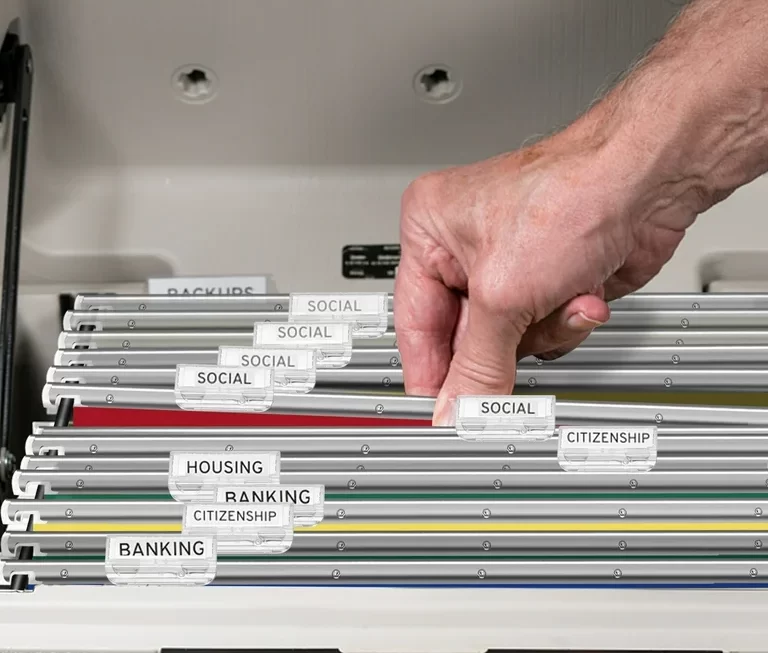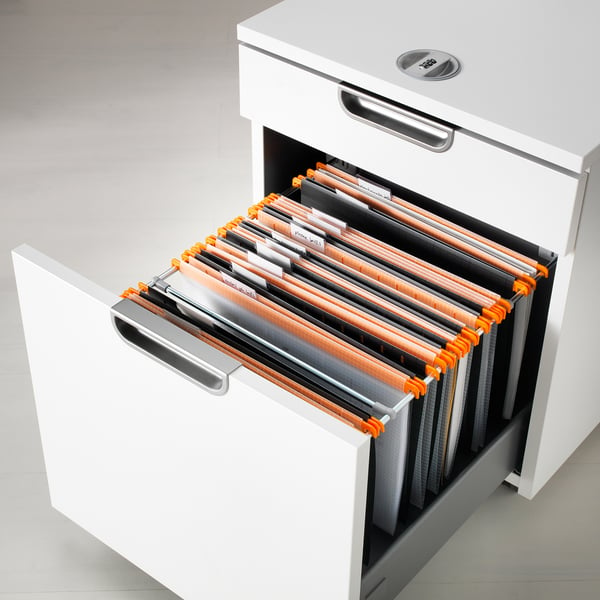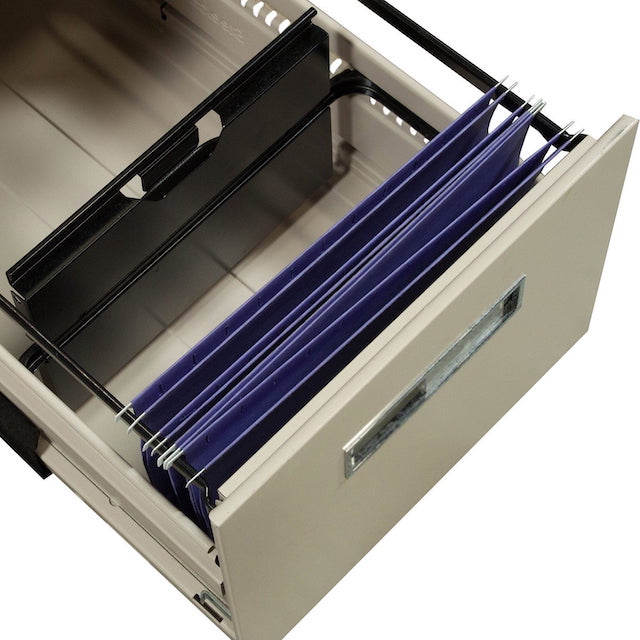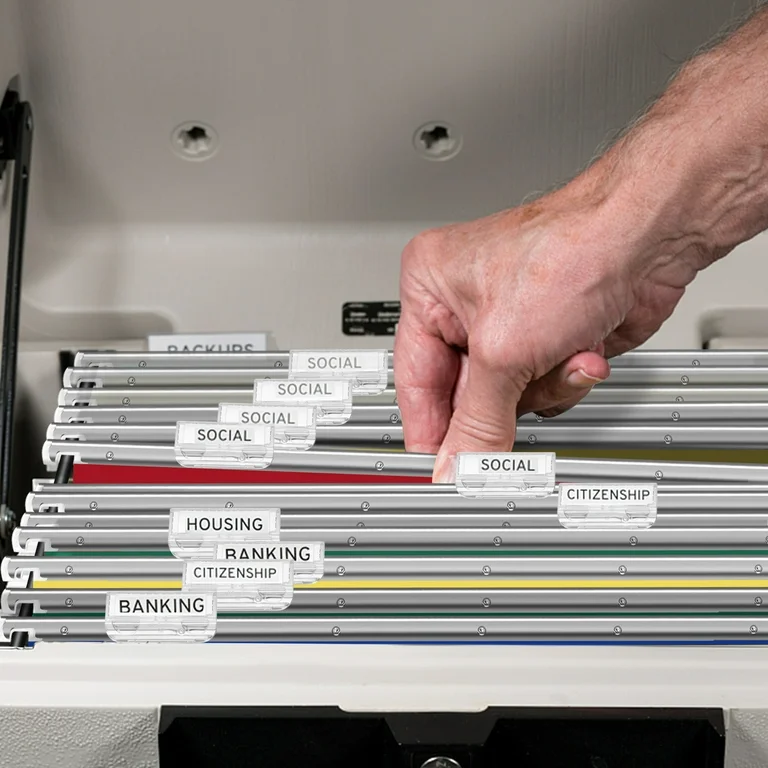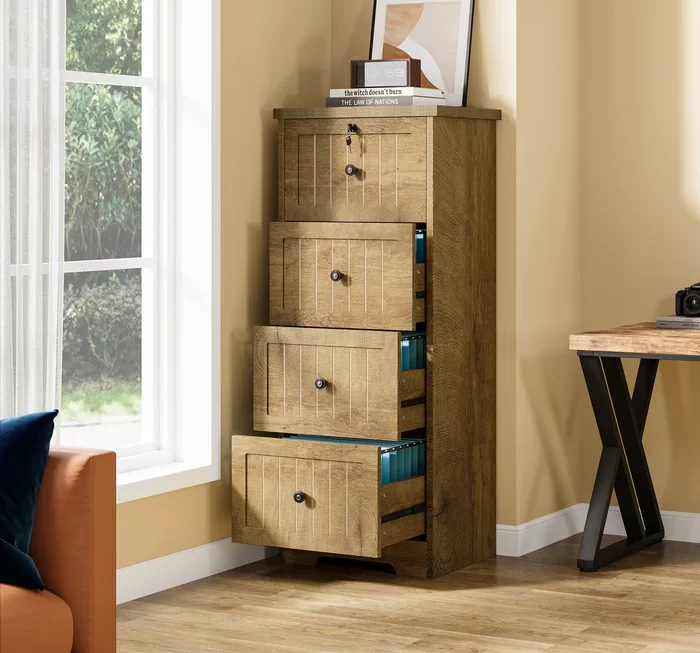The Importance of File Organization
Efficient file organization is vital for several reasons. First, it saves precious time. When you know where your documents are, you can find them quickly. This reduces stress, letting you focus on more critical tasks. Good organization also means less clutter, which leads to a more productive workspace. Moreover, having an organized filing system can prevent loss of important documents. Losing files can have serious consequences, from financial loss to legal issues. By keeping your filing cabinet folders sorted, you reduce the risk of such problems. Additionally, if you work in a team, clear organization makes sure everyone is on the same page. This is crucial for collaboration and maintaining continuity of work. Lastly, an organized filing system protects your data’s privacy. It helps you keep sensitive documents secure from unauthorized access.
Choosing the Right Filing Cabinet Folders
Selecting the perfect filing cabinet folders goes beyond just looks. It’s about finding the right balance between quality, size, and functionality. Begin by assessing the materials. Choose folders made from durable materials like heavy-duty paper or plastic. These can withstand frequent use and don’t tear easily. Next, consider size. Ensure the folders fit your cabinet and accommodate your documents without forcing or bending. Also, think about tabs and labels. Opt for folders with clear tabs that stand out for easy identification.
Tabs come in various styles, such as top and side tabs. Your choice should align with how you arrange your files. For instance, top tabs are great if you file front to back. If you file side by side, side tabs work better. They should also have enough space to write titles or attach labels.
Moreover, the right folders can enhance your filing system’s efficiency. Look for features that suit your organization style. Features like dividers and pockets add functionality, helping keep multiple related documents together. This prevents mixing up papers and losing important items. Finally, your filing needs might evolve, so it’s smart to choose folders that are flexible and can adjust to changes. Investing in the right filing cabinet folders is a step towards a more organized and productive workspace.
Innovative Labeling Strategies for Easy Retrieval
Finding documents quickly is key to efficiency. Innovative labeling can help you achieve this. Here are some strategies:
- Use Color Codes: Assign different colors to various categories. This visual cue speeds up file identification.
- Alphanumeric Labels: Combine letters and numbers for a structured approach. It works well for large volumes of files.
- Descriptive Titles: Instead of vague labels, be specific. For instance, ‘Q3 Marketing Report 2022’ is clearer than ‘Marketing Docs’.
- Label Consistency: Keep the font size, color, and style uniform across all folders. Uniform labels prevent confusion.
- Digital Label Printers: Invest in a label printer for professional and durable labels. Handwritten tabs can smudge or fade over time.
- Tab Position Variety: Rotate the position of tabs (left, center, right) within each category. This prevents a cluttered, uneven look.
- Update Regularly: Change labels as the file’s content evolves. Keeping labels current avoids misfiling.
- Icons and Symbols: Use simple icons or symbols for common file types. These visual shortcuts can be recognized quickly.
Adopting these innovative labeling strategies not only saves time but also enhances the overall functionality of your filing cabinet folders. Your system becomes intuitive, allowing both you and your coworkers to locate documents swiftly and with ease.
Optimal Filing Techniques
Adopting efficient filing techniques is crucial for managing filing cabinet folders. Below are proven methods to elevate your file organization:
- Straight-Line Filing: Place all folders in one line, within easy reach. This method simplifies finding and storing documents.
- Relevance Ordering: Arrange files by use frequency. Keep often-used files handy and archive the rest.
- Category Segmentation: Organize documents by category before placing them in folders. This ensures related files stay together.
- Alphabetical Setup: File documents alphabetically for quick reference. This is ideal for client or project names.
- Chronological Arrangement: Store files in time order, especially useful for financial records. Latest documents should be on top or in front.
- Index Guide Use: Create an index guide at the cabinet’s front. This directory leads to the right files quickly.
- Consistent Purging: Schedule time to remove outdated files. This prevents clutter and keeps the system current.
By integrating these techniques, you’ll refine your approach and enhance your filing cabinet folder system’s effectiveness. Remember, a tailored strategy that fits your specific needs will yield the best results.
Implementing a Color-Coded System
Implementing a color-coded system for filing cabinet folders brings multiple benefits. This system can greatly improve filing accuracy and speed up retrieval times. A well-planned color-coding strategy can make the difference in staying organized. Here’s how to implement it effectively.
- Select a Color Scheme: Choose a set of colors that are distinct and easy to differentiate. Assign each color to a specific category like finance, human resources, client files, etc.
- Simplify Categories: Don’t overcomplicate with too many categories. Stick to broad groupings that capture the essence of your documents.
- Use High-Quality Labels: Invest in quality labels that won’t fade or tear easily. They should stay attached and legible for a long time.
- Train Your Team: Make sure everyone understands the color-coding system. Provide a reference chart to help with familiarization.
- Consistent Application: Apply the color-coded system throughout all filing areas. This ensures that no matter where a file is stored, it follows the same system.
- Evaluate and Adjust: Periodically assess the effectiveness of your color-coded system. Be open to making changes if certain colors or categories are not working as intended.
By implementing a color-coded system, you’re not just coloring for the sake of aesthetics; you’re structuring your environment for optimal efficiency. Embrace the visual power of color to navigate your filing cabinet folders with ease and precision.
Maintenance: Regularly Updating Your Filing System
Maintaining an up-to-date filing system is critical for continued efficiency and order. Regular updates help you keep track of changes and prevent misplacing important documents. Here are actionable steps to ensure your filing cabinet folders remain current:
- Schedule Regular Reviews: Set aside time monthly or quarterly to go through your files. This routine check will highlight any outdated or unnecessary documents.
- Remove Obsolete Files: Discard or archive old files that are no longer relevant to your current work. This creates room for new documents and reduces clutter.
- Update Labels: As you review, take the opportunity to refine your labeling system. Adjust the titles on folders to reflect the contents accurately.
- Re-evaluate Categories: Sometimes, what made sense initially may not be the best organization method anymore. Don’t hesitate to re-organize files to better suit your needs.
- Consistency is Key: Practice consistency in maintenance across all filing areas. Ensure each filing cabinet folder aligns with the overall system.
- Back-Up Digitally: While updating, consider creating digital copies of important documents. This adds an extra layer of security and ease of access.
By diligently maintaining your filing system, you will minimize the time spent searching for documents, enhance productivity, and maintain an organized work environment. Remember, filing cabinet folders are tools in your organizational arsenal—keep them sharp and effective with regular maintenance.
Integrating Digital Tools with Physical File Management
While physical filing cabinet folders are essential, integrating digital tools can enhance file management. Combining both methods streamlines processes and backs up important data. Here’s how to incorporate digital tools effectively:
- Digital Document Management Software: Use software to track physical documents. Procedures are smoother with a digital database of your filing system.
- Scanning Documents: Scan important papers into digital format. This creates an electronic backup for extra security.
- Sync with Cloud Services: Store digital copies in the cloud. This ensures access to your files from anywhere.
- Mobile Access: Use apps that allow you to view and manage your digital files on the go. Quickly access documents using your smartphone.
- Regular Syncing: Keep your physical and digital files in harmony. Update both as you add or remove documents.
- Training: Equip your team with knowledge on digital tools. Ensure they understand how to use them alongside the filing cabinet folders.
- Security Measures: Protect digital files with passwords and encryption. Keep personal and sensitive information safe.
Combining digital tools with traditional filing mitigates risk of loss or damage. It also offers convenience and accessibility that physical files alone cannot provide. Embrace the digital age to complement your filing cabinet folder organization.
Protecting Personal and Sensitive Information in Folders
Ensuring the security of personal and sensitive information is critical in any filing system. It involves both physical and digital measures to protect against unauthorized access and data breaches. Here’s how to safeguard your sensitive documents effectively:
- Limited Access: Restrict access to sensitive files. Only allow entry to those who need it for their work.
- Secure Storage: Use lockable filing cabinets for physical documents. This adds a layer of security to sensitive information.
- Privacy Filters: Consider privacy filters for labels. This makes it harder for passersby to glance at confidential titles.
- Clear Protocols: Establish rules for handling sensitive documents. Make sure every team member knows these protocols.
- Shred Unneeded Papers: Destroy documents that you no longer need. Use a cross-cut shredder for extra security.
- Audit Trails: Keep logs of who accesses files, when, and why. This helps track document handling and prevent leaks.
- Regular Training: Provide ongoing training on data protection. Update the team on new security practices.
By implementing these steps, you create a barrier against potential threats to personal and sensitive data within your filing cabinet folders. Regularly monitor and improve these security measures for the best protection.
